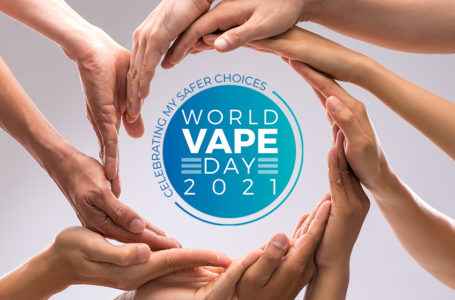Three things are needed to advance tobacco harm reduction, according to Maria Gogova, vice president and chief scientific officer of Altria Client Services.
“Advance innovation to bring to the market a portfolio of non-combustible products backed by science and evidence. Deepen understanding of consumers’ motivations as well as barriers for conversion, particularly misperceptions about nicotine. Finally, develop a pragmatic regulatory framework that encourages innovation while protecting the youth,” she said.
Gogova was one of the resource speakers during the In Focus: Tobacco Harm Reduction webinar organized by the Global Tobacco & Nicotine Forum (GTNF) Trust on April 27, 2021. The webinar featured public health, industry and public policy experts who presented “whole-of-government” and “whole-of-society” approaches similar to those adopted by the United Nations to evaluate the science on tobacco harm reduction products and to address the challenges and opportunities that lie ahead.
Nicotine misconceptions
“The adult tobacco consumer landscape is evolving. More than half of adult smokers in the US are interested in non-combustible alternatives such as vapor [e-cigarettes], moist smokeless tobacco, snus and other oral tobacco-derived nicotine. Many of them have tried non-combustible alternatives but have not yet found the right product to meet their needs,” Gogova said. She noted a fundamental difference in purchase behavior among different cohorts of adult tobacco consumers. A third of adult tobacco customers in the US age 21 and 29 are currently exclusive non-combustible tobacco product users. Reduced social frictions and reduced harms are important tobacco product attributes across many adult tobacco consumers, she added.
Nicotine misperceptions are among the most common barriers that impede adult smokers’ transition to non-combustible alternatives, according to Gogova. She cited results of a recent Altria Client Services survey which found that 77% of the general public and 70% of adult smokers believe that nicotine is as harmful as, or more harmful than, conventional cigarettes.
Gogova also highlighted the results of a 2020 national survey by the Rutgers University in the US involving 1,000 physicians from six specialties. The survey found that over 80% of doctors mistakenly believe that nicotine directly causes cancer, chronic obstructive pulmonary disease (COPD), and heart disease. “These nicotine misperceptions, along with media news stories, can contribute to the growing misperception about the relative health effects of non-combustible products compared to conventional cigarettes,” warned Gogova.
Gogova presented the latest results of the US Food and Drug Administration (FDA) multi-wave Population Assessment of Tobacco and Health (PATH) Study, which showed that the vast majority of adult tobacco consumers believe e-vapor, smokeless tobacco products, and snus are equally or even more harmful than conventional cigarettes. It found that adult smokers who believe that e-vapors are less risky than conventional cigarettes at Wave 3 were three times more likely to switch to e-vapor by Wave 4.
“Our recent study found that 40% of adult smokers are very interested and extremely interested in switching to non-combustible tobacco products that carry reduced-exposure claim. For example, ‘Switching completely significantly reduces your body’s exposure to harmful or potentially harmful chemicals.’,” Gogova explained.
Another barrier for adult smoker transition to non-combustible products in the US is the increasing number of state and local policies advocating for flavor bans or nicotine ceilings, according to Gogova. She cited the results of their company’s actual-use study on an oral nicotine pouch brand. The study showed that at the end of six weeks 28% of adult smokers and 72% of adult dippers (moistened smokeless tobacco users) switched completely to oral nicotine pouch.
“More importantly, among switchers, 97% use at least two or more flavors or varieties, and 85% use two or more nicotine strengths. This indicates that a portfolio of flavors and nicotine strengths is important in adult smoker conversion to non-combustible alternatives,” stressed Gogova.
Leverage real-world evidence
According to Gogova, there are currently almost 10 million e-cigarette users, 6.8 million smokeless tobacco users, and close to one million oral nicotine pouch users in the US. She noted that despite the broad regulatory oversight of tobacco products in the US, many public health experts remain hesitant to fully accept tobacco harm reduction primarily due to unknown long-term health effects.

“To close this gap, one opportunity is to leverage available evidence, which is a concept strongly supported by other FDA centers. These include electronic medical records, pharmacy data, hospitalization records or claims, which can provide insights on the impact of non-combustible products on users, particularly benefits or potential risks. But in order to leverage real-world evidence, I think our healthcare system needs to start collecting more granular information about tobacco use history so that we can start linking the individual data to tobacco use history,” Gogova said.
She underscored the need to correct misconceptions about nicotine and non-combustible products, as well as to craft evidence-based policies. “And I believe that collecting real-world evidence will be important to start understanding the impact of non-combustible products.”



















